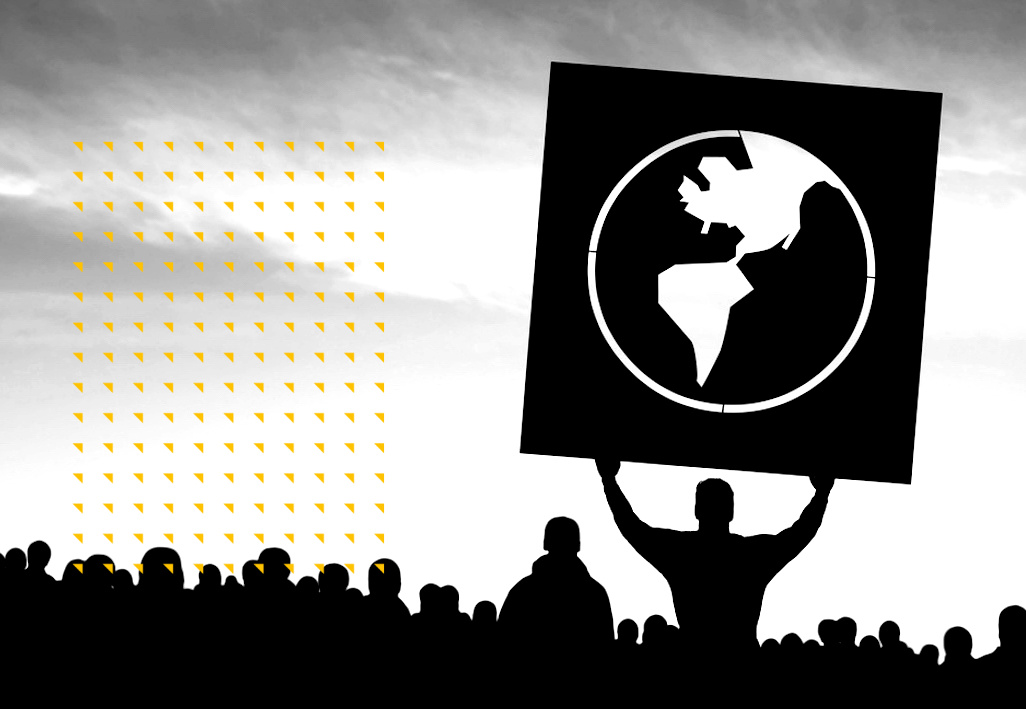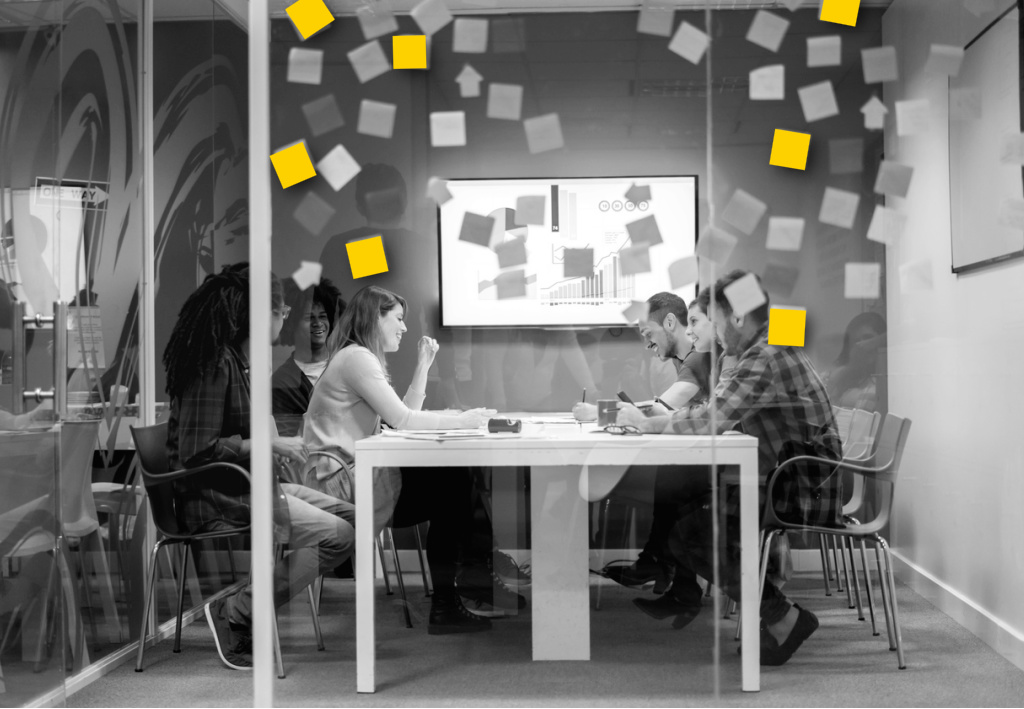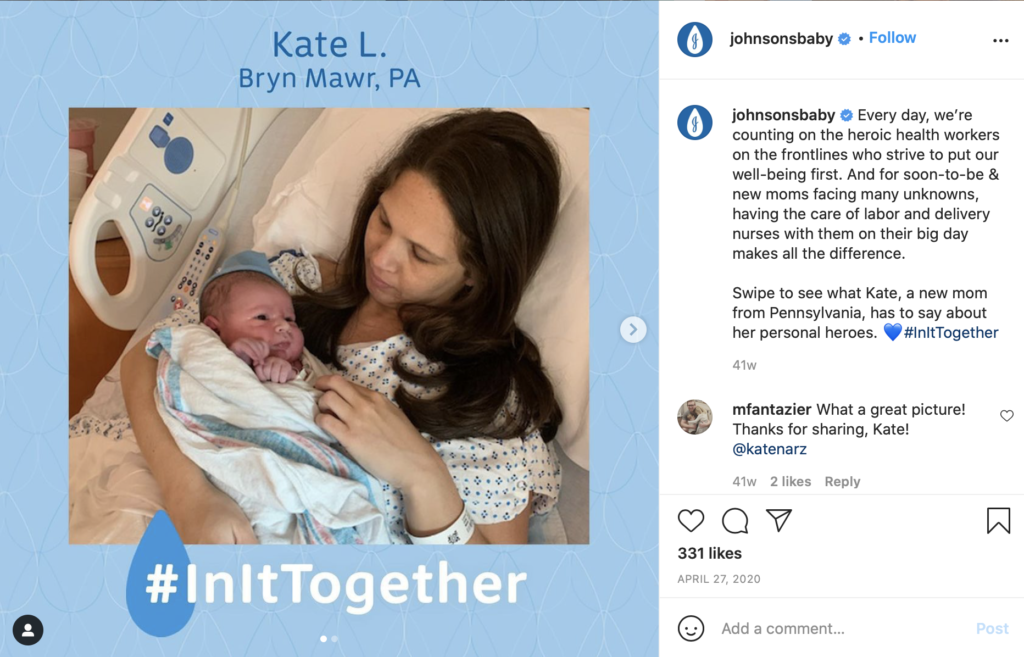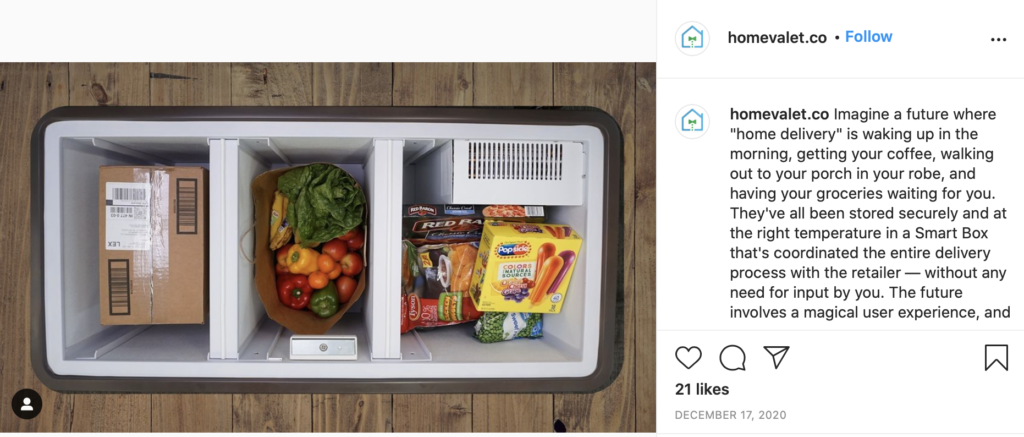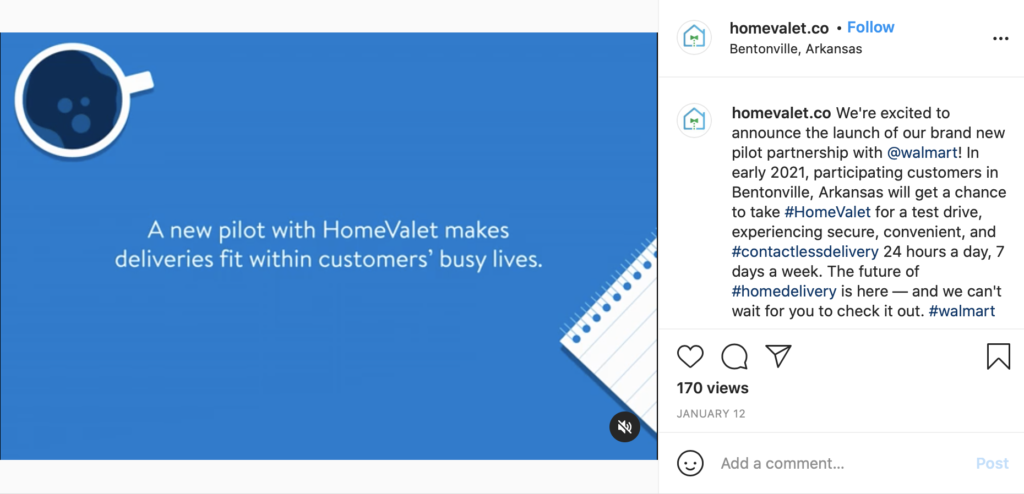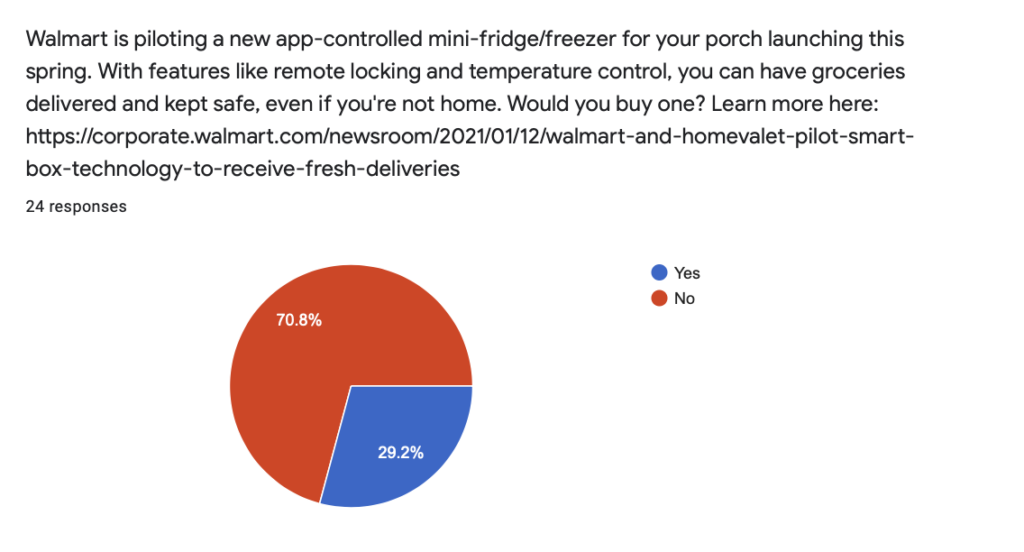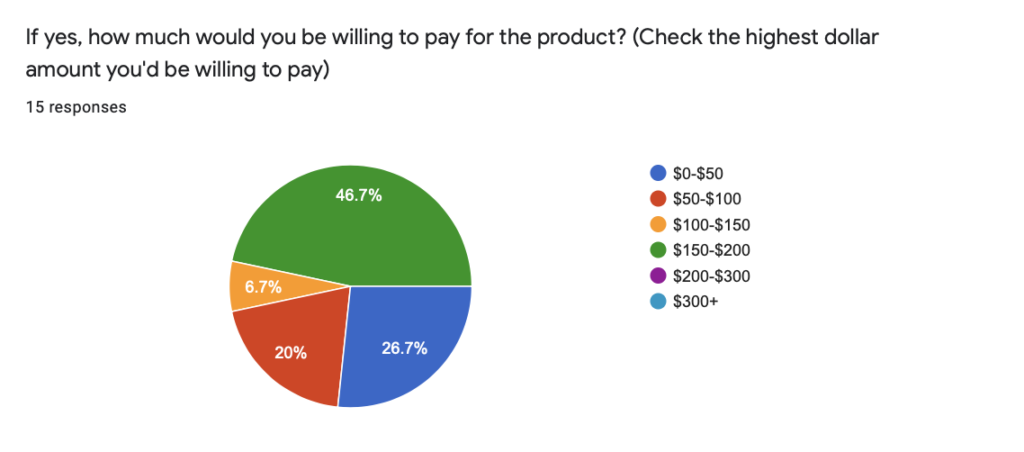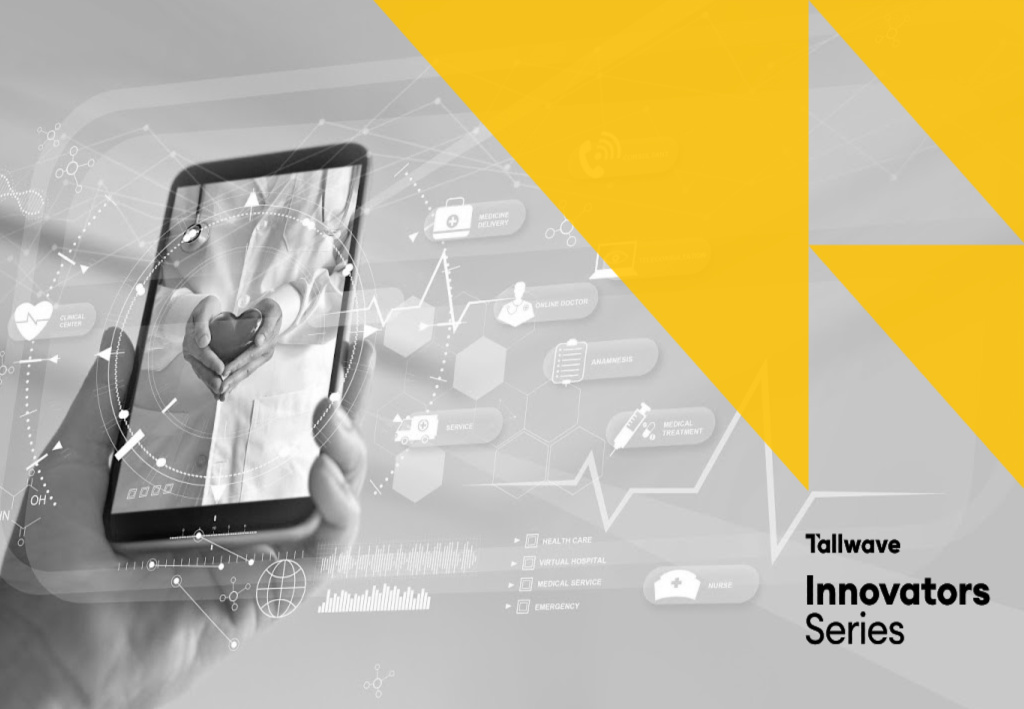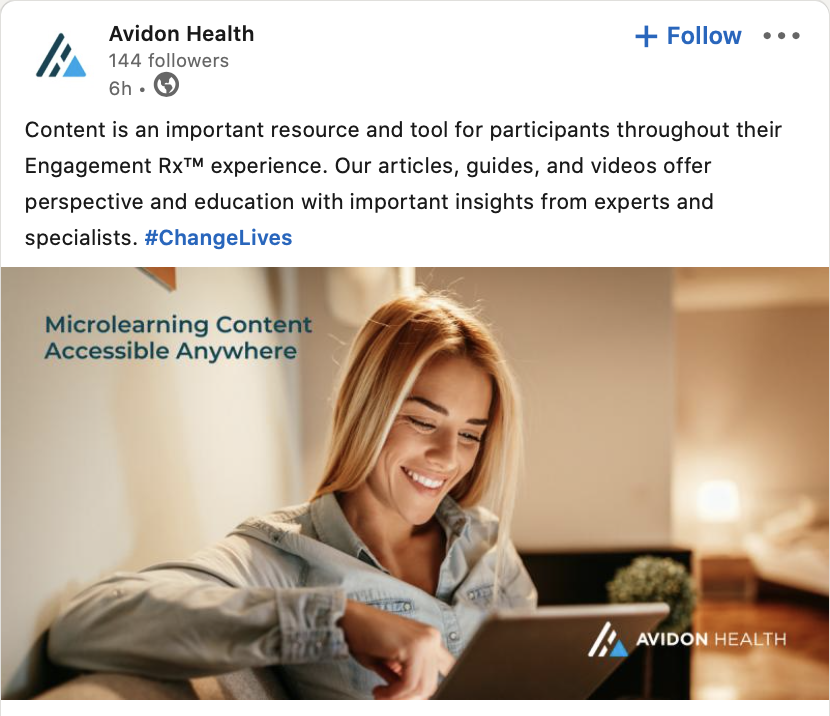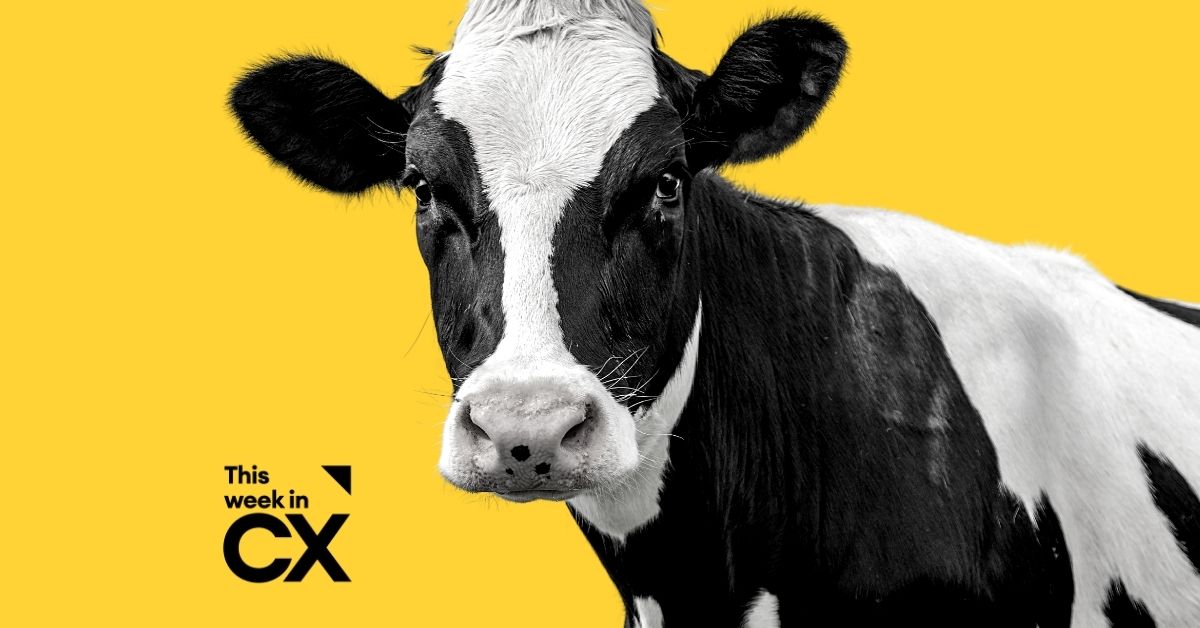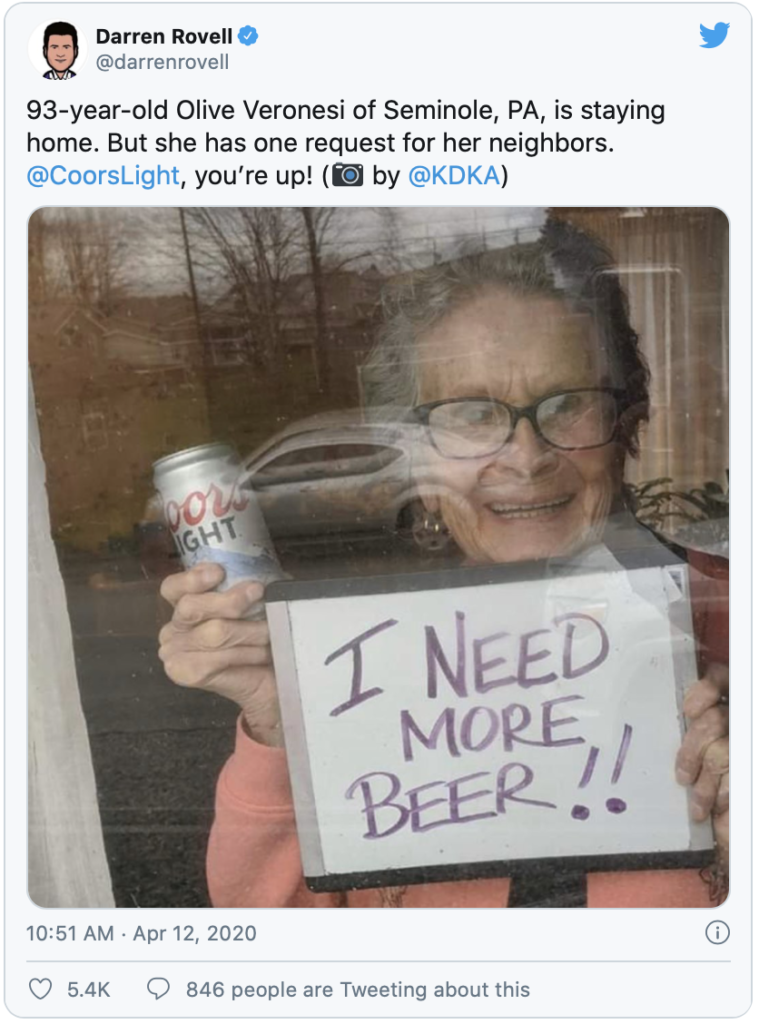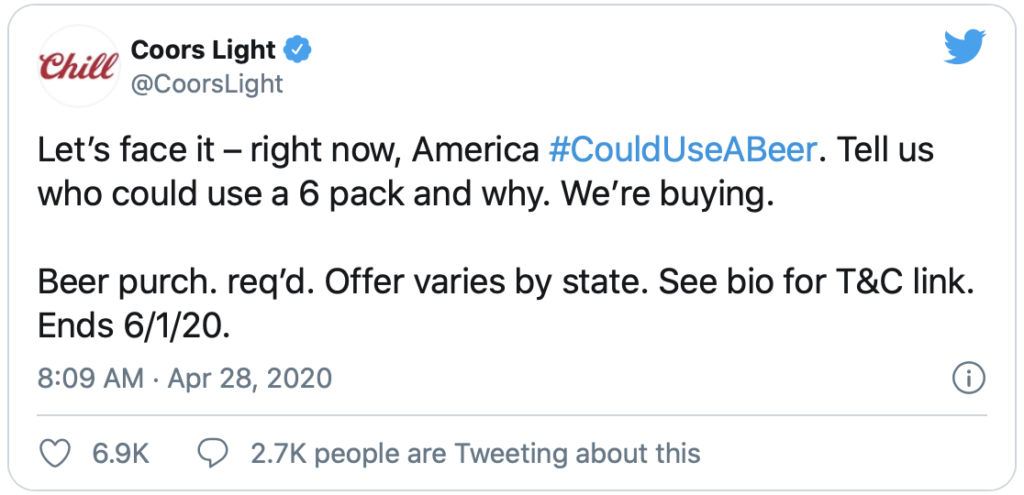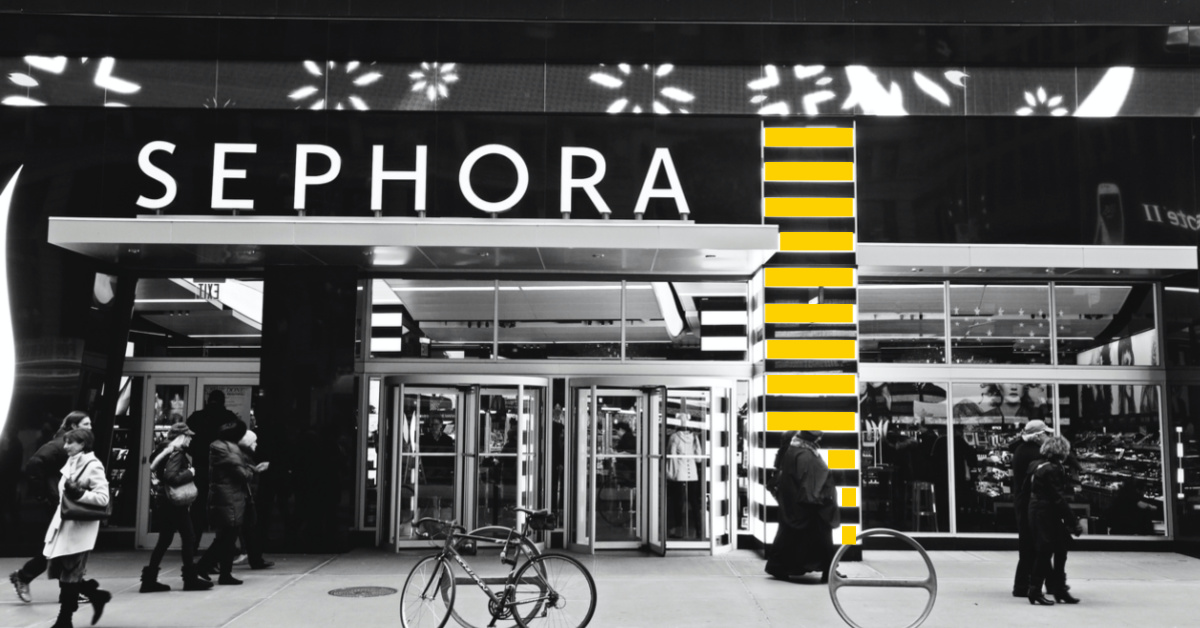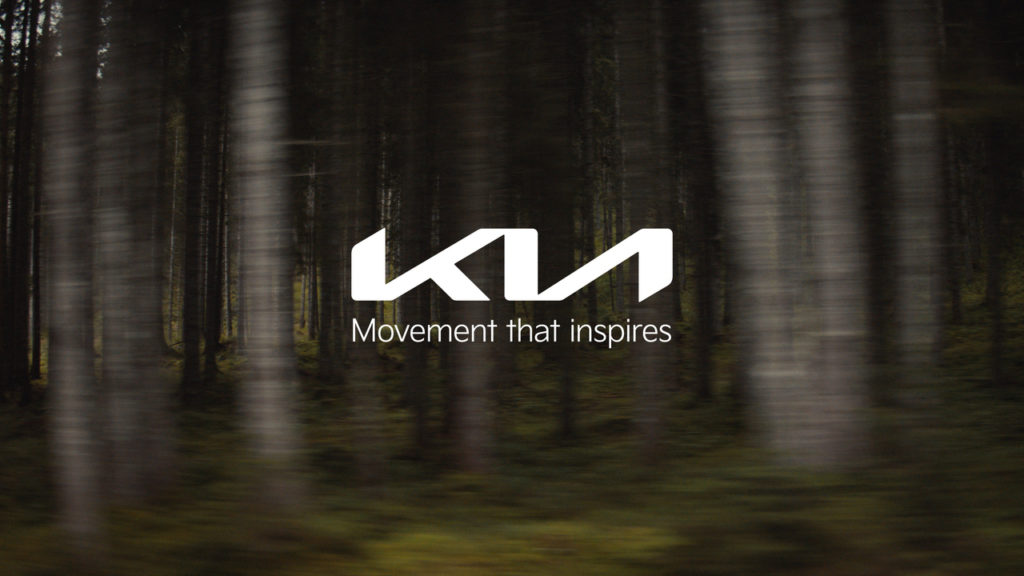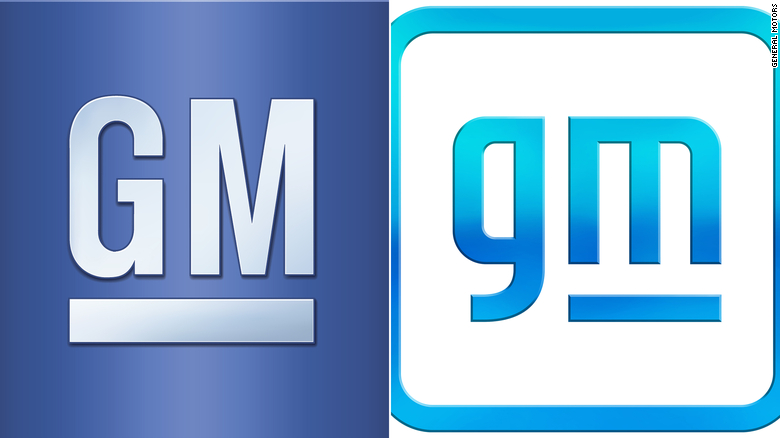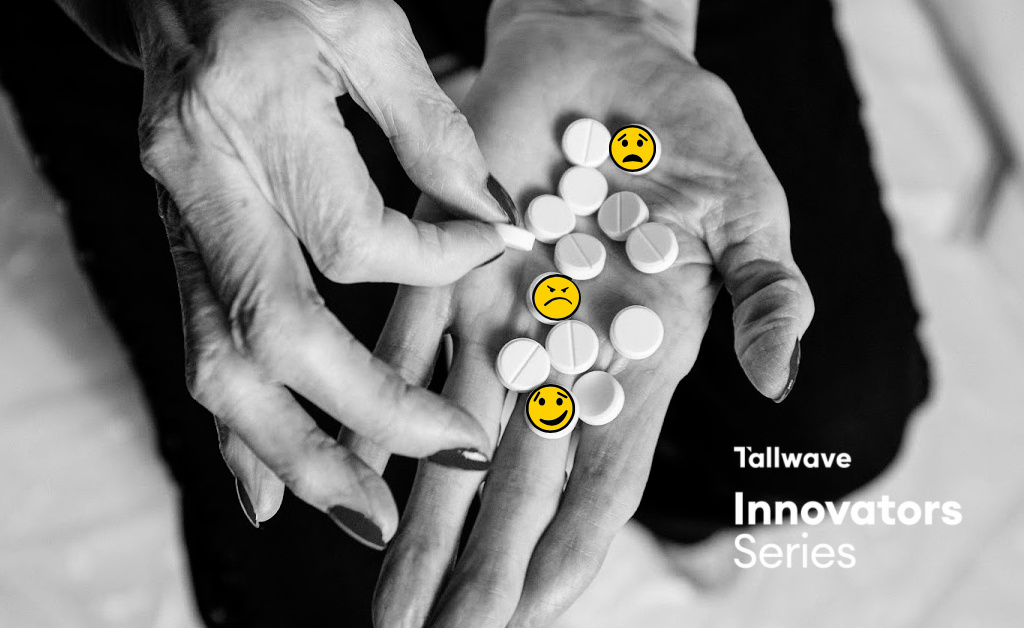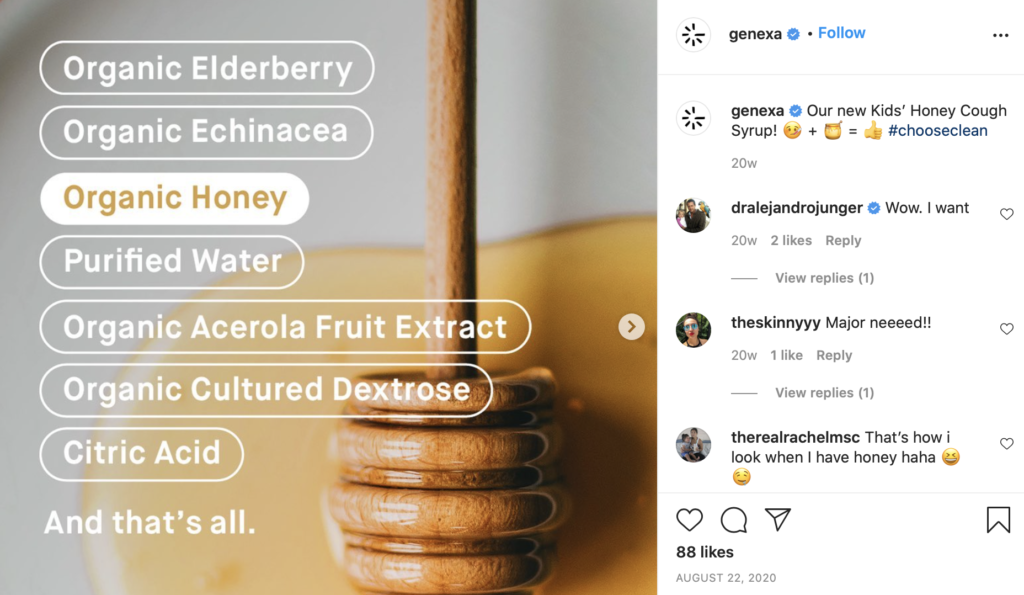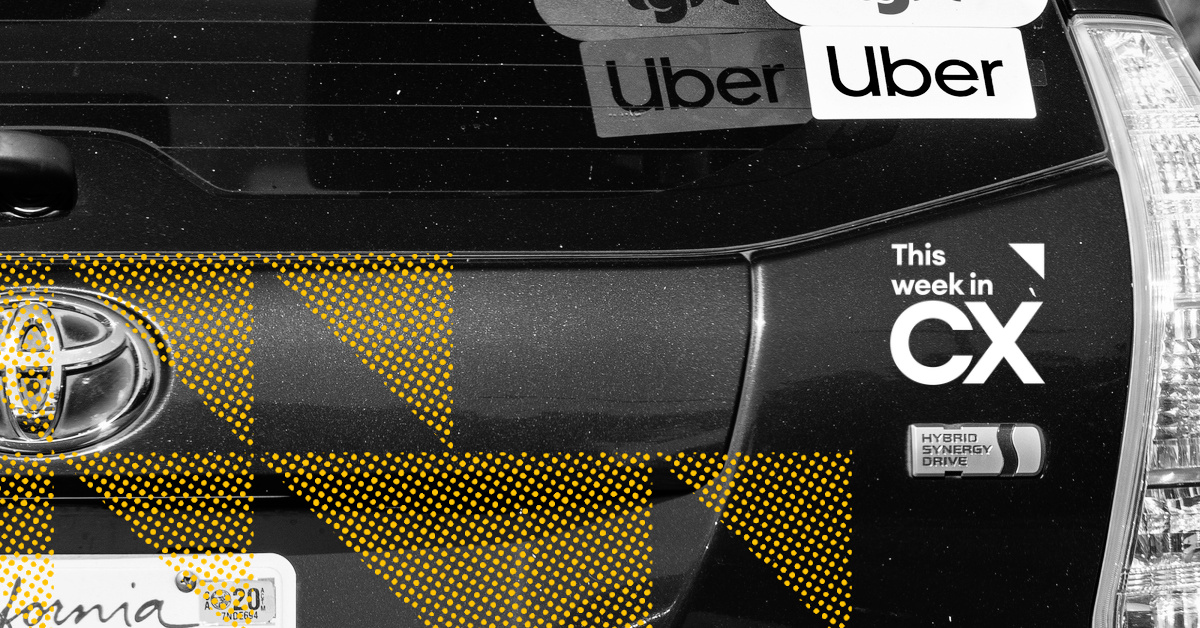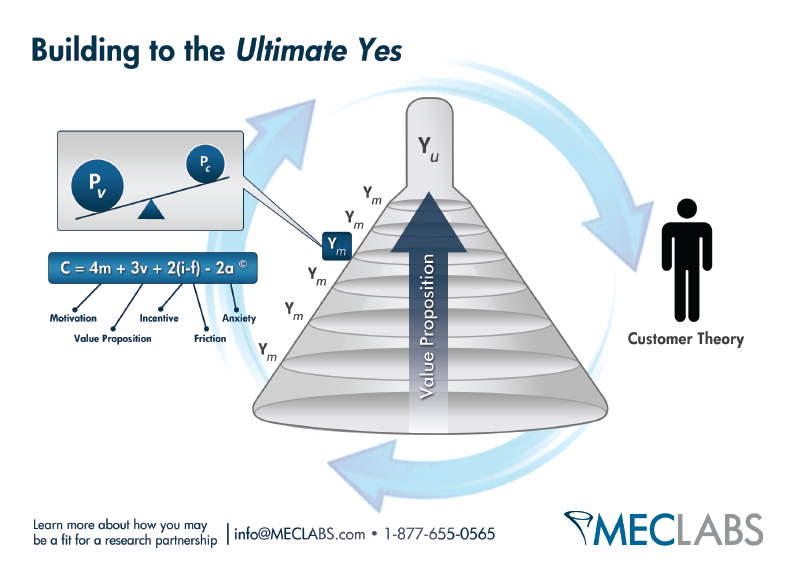Week over week, we unpack emerging trends, data developments, business model innovations and new technologies that are changing consumer behavior and driving CX expectations of tomorrow. But there are other factors that, especially in 2021, impact how consumers relate to brands long-term: Social impact, responsibility, and philanthropy.
We’ve known for many years that authentic corporate philanthropy increases employee satisfaction, morale, and retention, but new studies are revealing just how much it also impacts the overall customer experience, as well. Case in point:
- A survey by Nielsen discovered that 50% of consumers will pay more for a product or service if the business prioritizes sustainability.
- The 2019 Aflac Survey of Corporate Social Responsibility found that 77% of consumers would “be motivated to purchase a company’s products or services if the company shows they are committed to making the world a better place.”
- A survey conducted by Clutch found that shoppers believe environmentally-friendly business practices (71%), social responsibility (68%) and giving back to the local community (68%) to be the most important attributes of a company, even above price. Additionally, 71% said they believe it’s important for businesses to take a stance on social and cultural issues.
“We all have a responsibility to make this place better than we found it,” says Tallwave Senior Consultant Erin Nielsen. “That can come in many forms but it shouldn’t just be up to a residential individual. There’s strength in numbers, and money talks. Why shouldn’t companies be the ones driving toward larger, bigger actions? They have the people, the podiums, the funds, and the opportunities to make a bigger difference.”
Not only should businesses care about making social, environmental, and/or cultural differences because, well, they should, as the metrics above highlight, it is becoming increasingly paramount to consumers as they decide who deserves their money.
Millennials have proven that commitment to causes is a driving factor behind whether they buy from a company or not.
“Consumers are smarter than they have ever been,” Erin explains. “They have information at their fingertips and are becoming more and more informed about what organizations truly stand for and are empowered to make decisions based on that alone. You see that in specific segments of the market: Millennials have proven that commitment to causes is a driving factor behind whether they buy from a company or not. Let’s take Toms, for example. When they entered the market with a buy one, give one model, they were a disruptor from that perspective. It made me want to give my money to an organization that’s going to do something with it. I can buy Toms or I can buy from a company that doesn’t share where my money goes – whether it be towards an advertising campaign, brick and mortar, or in their pockets. Consumers have choices and they care. Now more than ever, people don’t trust companies at their word. They need to prove that they’re doing what they say they’re doing. They need to live their values and integrate their beliefs into their work.”
Basically, if you’re focused on crafting excellent customer experiences and building a bond with consumers that can last a lifetime, you can’t only drive materialistic or time-saving value. You have to cultivate a brand that your consumers can see themselves in and rally around. You’ve got to stand for something, and find a way to embed that into the DNA of everything you do.
Like many of you reading this, we’re still figuring out how we want to show up in the world and be a catalyst for change.
Now, before we share the top stories we’re talking about this week, we do have to make a confession: While we’re experts in many areas, this isn’t necessarily one of them. Everyday, we’re learning, growing, and figuring out how to do better. At Tallwave, we put employees above everything and execute our work from the heart with humans’ best interests at the core, but, like many of you reading this, we’re still figuring out how we want to show up in the world and be a catalyst for change. And that’s OK. We believe, in order for this kind of work to transform our brand and the communities we touch, we must approach it like a marathon, not a sprint. We’ve built a DE&I task force and broken them up into four categories, each focused on cultivating and operationalizing strategies most important to us: Talent outreach, client and marketplace engagement, internal culture and training, and community outreach. We’re listening, we’re learning, and we’re putting actions behind our words to develop the social impact and philanthropic programs that are right for us.
These stories and these brands are paving the way. We look to them for guidance, inspiration, and motivation, and can’t wait to join them in the corporate and social responsibility ranks.
CDK Global Doubles Down On Their Promise to Support Inclusive & Equitable Quality Education For All
Last August, CDK Global – a leading provider of integrated data and technology solutions to the automotive, heavy truck, recreation, and heavy equipment industries – announced their commitment to increasing accessibility to quality education and lifelong learning for all. Since then, they’ve directed 90% of their corporate giving to education-related causes, and this past Wednesday, doubled down on their promise by pledging a total of $70,000 to the Boys and Girls Clubs of Southeast Louisiana, greenlight for girls, and ASE Education Foundation.
“Now more than ever, we understand that not everyone has equal access to a traditional learning environment where they can receive a quality education,” CDK Global’s Executive Vice President, Chief Human Resources and Communications Officer Amy Byrne told Business Wire. “Through our corporate philanthropic partnerships, we are investing in programs that help create the next generation of leaders by improving access to knowledge and enhancing the skills of people from all backgrounds.”
CDK Global chose to donate $25,000 of the $70,000 total to the Boys and Girls Clubs chapter in Southeast Louisiana after they were forced to cancel their in-person National Automobile Dealers Association (NADA) trade show – which was scheduled to be hosted there – and transition to virtual setting due to COVID-19. The change of plans caused a blow to the community’s projected local economic growth for the year. To make up for it, the funds will make CDK the first-ever sponsor for a new literacy program planned for the 2021-2022 school year – one that will reportedly help 75 children per day to alleviate social challenges, increase school performance, and better prepare for standardized tests.
CDK’s partnership with greenlight for girls (g4g) also isn’t brand new. The two organizations joined forces to develop educational materials for girls in STEM subjects back in July 2020. According to the founder and chairman of g4g Melissa Rancourt, the $25,000 donation will help them “achieve significant reach, impact, and resonance to our sustainable development and societal goal… [to] inspire local communities of girls and boys to build their curiosity, abilities, and aspirations in STEM.”
Lastly, CDK plans to donate the remaining $20,000 to ASE Education Foundation to help educate, prepare, and inspire a new generation of automotive service workers. The funds will fuel an assessment to evaluate the diversity, equity, and inclusivity of ASE’s educational programs, and will empower their curriculum to reach and attract varied student populations. “The future of the service industry is brighter because of their contributions,” said ASE Education Foundation Present Michael Coley. Neiman Marcus Group
Launches New Campaign Focused on Fostering Black Excellence
February is Black History Month so there was no more appropriate time for Neiman Marcus Group to announce their new campaign, “Celebrating Black History By Supporting Black Futures.”
“NMG is a place where everyone belongs, where diversity is valued, and where showing up as your full and authentic self is expected."
Unveiling a multi-pronged strategy that consists of both new and ongoing initiatives, Neiman Marcus plans to use corporate philanthropy dollars to support the Boys and Girls Club of America, as well as improve internal learning opportunities and marketing efforts designated to source and empower Black talent. Additionally, Neiman Marcus Group plans to host a fireside chat for associates and customers between Nikole Hannah-Jones, Pulitzer Prize-winner reporter of racial injustice for The New York Times, and Tracy Pereston, the company’s Chief Legal Counsel. People can RSVP for the virtual event on their site. Upon the event’s culmination, Neiman Marcus Group will make a donation to the Ida B. Wells Society for Investigative Reporting on behalf of Hannah-Jones.
“NMG is a place where everyone belongs, where diversity is valued, and where showing up as your full and authentic self is expected,” said Chief People & Belonging Officer of Neiman Marcus Group Eric Severson. “As we progress on our Belonging journey, our people and their voices are a priceless way we highlight the excellence that makes up our company.”
To read more about Neiman Marcus Group’s philanthropic work, visit The Heart of Neiman Marcus.
Qualcomm Releases 2020 Corporate Responsibility & Reveals Plans Through 2025
Qualcomm Incorporated, the world’s leading wireless technology innovator, released its 2020 Corporate Responsibility Report last week, recapping the company’s environment, social, and governance performance (ESG) for the year.
“We have had many successes over the last year despite the unforeseen challenges of 2020. As we continue to work toward our 2030 Vision, I am proud to report we successfully met or exceeded our 2020 corporate responsibility goals,” said Steve Mollenkopf, Chief Executive Officer, Qualcomm Incorporated.
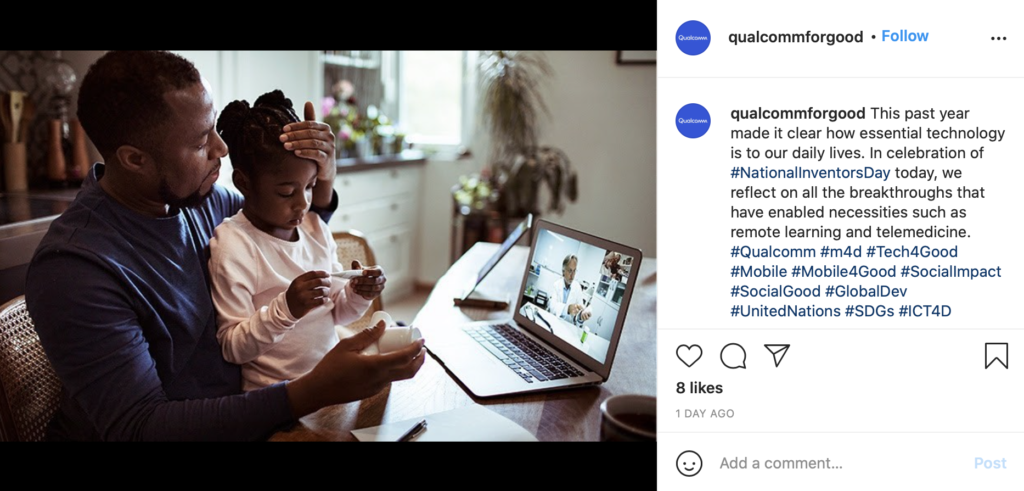
Also read: Solving For a Lack of Diversity in CX
Qualcomm is hoping to make significant impacts across four key areas: Purposeful Innovation, STEM Education, Responsible Business and Our People. And they made some significant strides in recent years:
- Over the last two year, Qualcomm increased their female engineer workforce by 17% worldwide
- They increased racial and ethnic group engineers in the technology sector by 12%
- Employee satisfaction towards Qualcomm’s workplace inclusivity increased by 10%
- They launched a Small Business Accelerator program, which helped 33 small businesses transition to a mobile-first digital infrastructure
- Their Wireless Reach program benefitted more than 20 million people across 48 countries by enabling access to their technology for education entrepreneurship, healthcare, public safety, and environmental sustainability purposes.
- They conducted their first climate scenario analysis, of which insights are included in the report
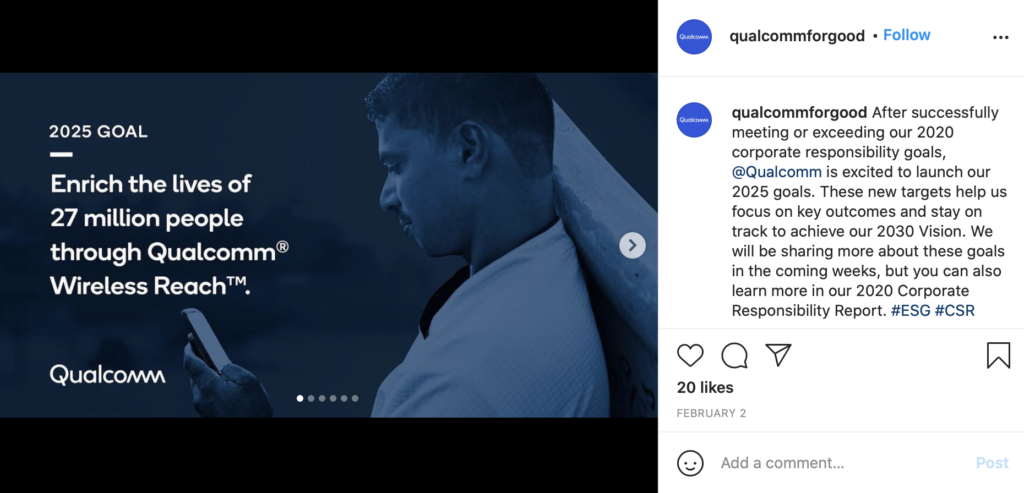
Despite making major strides, Qualcomm isn’t satisfied yet. While crafting strategic corporate plans through 2025 and beyond, they defined quantitative targets designed to measure improvements pertaining to diversity within their workforce, enforcing more sustainable practices in all areas of business and transforming industries with their new technologies to “build a more resilient economy, and catalyze social change for billions of people across the globe,” said Qualcomm CEO Steve Mollenkopf.
“In the year ahead, we will start working toward achieving our newly launched 2025 corporate responsibility targets, prioritizing environment, diversity and inclusion, and reporting,” Qualcomm’s Executive Vice President and Chief Financial Officer Akash Palkhiwala said in a statement. “Among these, we will continue to address and improve our environmental performance through greenhouse gas reduction strategies, reduce power consumption, and work to build a more diverse workforce.”
Learn more about Qualcomm’s 2025 goals and ESG performance in 2020 in the full report here.

